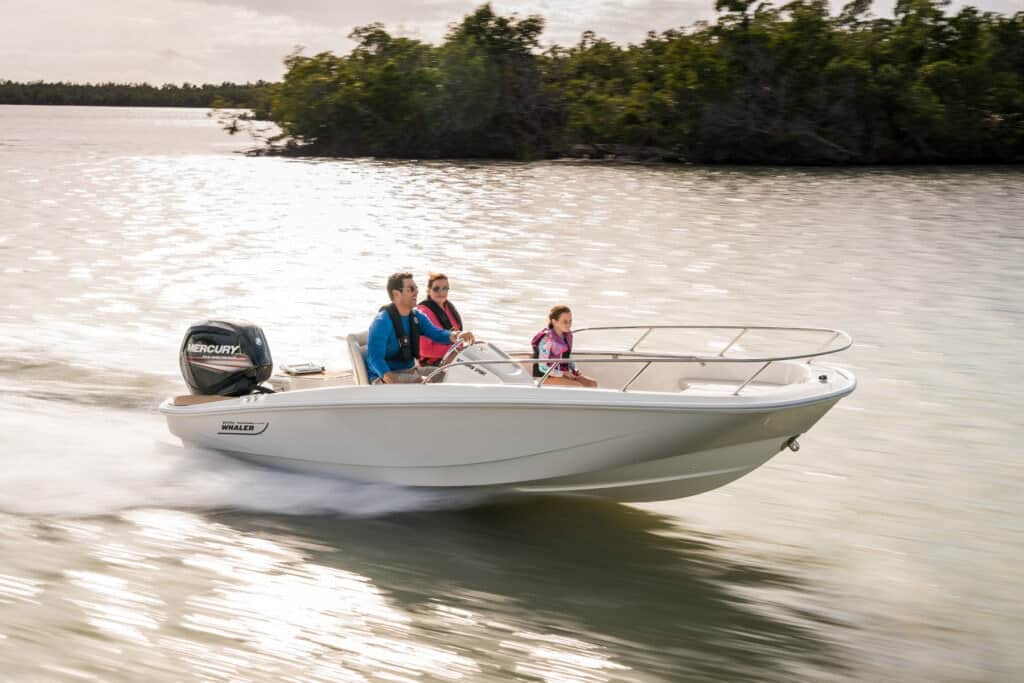Boating is a passion for many people, and owning a boat is a dream come true. However, boats can be expensive, and not everyone can afford to pay for them outright. In such cases, boat loans can be a great way to finance a purchase. But when it comes to boat loans, there are two types to consider: secured and unsecured. Secured loans require collateral, such as the boat itself or a home or car, while unsecured loans do not require collateral. Both types of loans have their advantages and disadvantages, and it’s important to understand the differences between them before deciding which one is right for you. In this blog post, we’ll explore the differences between secured and unsecured boat loans, their pros and cons, and how to choose the right one for your needs.
Secured Boat Loans
A secured boat loan is a type of loan that is backed by collateral in the form of a boat or other watercraft. When you take out a secured boat loan, the lender uses the boat as security for the loan. This means that if you default on the loan, the lender can repossess the boat to recoup their losses. Because the lender has this added security, secured boat loans often come with lower interest rates than unsecured loans. However, it’s important to note that if you default on the loan and the lender repossesses the boat, you could lose ownership of the boat.
What Is Collateral For a Loan?
When taking out a secured boat loan, the lender will require collateral to secure the loan. Collateral for a secured boat loan can include the boat itself, as well as any other assets that the borrower is willing to pledge as security for the loan, such as a car or home. In the event that the borrower is unable to repay the loan, the lender has the right to seize the collateral and sell it to recover their losses. To determine the value of the collateral, the lender will typically perform an appraisal of the boat and any additional assets offered as collateral. It is important for the borrower to carefully consider the value of the collateral and ensure they can make the loan payments on time, as failure to do so could result in the loss of the boat or other assets.
Advantages of Secured Loans
There are several advantages to taking out a secured loan. Here are a few:
- Lower interest rates: Secured boat loans typically come with lower interest rates than unsecured loans because the lender has collateral to back up the loan.
- Access to larger loan amounts: Because the lender has the security of the boat as collateral, they may be more willing to lend larger amounts of money than they would with an unsecured loan.
- Longer repayment terms: Secured boat loans may come with longer repayment terms than unsecured loans, which can help make the monthly payments more affordable.
- More flexible repayment options: With a secured loan, you may have more options for repayment, including the ability to make larger or smaller payments, or to make extra payments without penalty.
- Easier approval: Because the loan is secured by collateral, lenders may be more willing to approve your loan even if you have a lower credit score or limited credit history.
Overall, a secured boat loan can be a good option if you’re looking to finance a boat purchase, as it may come with lower rates, larger loan amounts, and more flexible repayment options. However, it’s important to carefully consider the risks and benefits of any loan before signing on the dotted line.
Disadvantages of Secured Loans
While secured loans can offer several advantages, there are also some disadvantages to consider when taking out a secured boat loan. Here are a few:
- Risk of losing collateral: The biggest risk of a secured loan is that if the borrower is unable to repay the loan, the lender can seize the collateral. For example, if a borrower takes out a secured boat loan and is unable to make payments, the lender could repossess the boat.
- Time-consuming application process: Secured loans typically require more paperwork and a more extensive application process than unsecured loans, due to the need for collateral evaluation and verification.
- Longer repayment terms: While longer repayment terms can be an advantage, they can also be a disadvantage as borrowers may end up paying more interest over time.
- Limited use of collateral: Once a borrower pledges collateral for a loan, they cannot use that collateral for any other purpose until the loan is repaid. In the case of a secured boat loan, the borrower cannot sell the boat or use it as collateral for another loan.
- Higher fees: Secured loans may come with higher fees than unsecured loans, such as appraisal fees, insurance fees, or closing costs.
Overall, borrowers should carefully weigh the advantages and disadvantages of a secured boat loan before deciding whether it’s the right option for their financial situation.
Unsecured Boat Loans
An unsecured boat loan is a type of loan that does not require collateral, such as a boat or other asset, to secure the loan. Instead, the lender evaluates the borrower’s creditworthiness and income to determine their ability to repay the loan. Unsecured boat loans are typically offered at higher interest rates than secured boat loans, as the lender is taking on more risk by not requiring collateral. However, unsecured loans can be a good option for borrowers who do not want to put up collateral, or who do not have valuable assets to use as collateral. Unsecured boat loans can be used to finance the purchase of a new or used boat, as well as other related expenses such as repairs or upgrades.
Advantages of Unsecured Loans
While unsecured loans may not offer the same security as secured loans, they do have some advantages. Here are a few advantages of an unsecured boat loan:
- No collateral required: The biggest advantage of an unsecured boat loan is that it does not require any collateral, which means borrowers do not have to put up their boat or any other asset as security.
- Faster application process: Unsecured loans typically require less paperwork and a shorter application process than secured loans, which can make it easier and faster to obtain the loan.
- No risk of losing collateral: Since there is no collateral required for an unsecured loan, borrowers do not have to worry about losing their boat or other assets if they are unable to make their loan payments.
- Flexibility: Unsecured loans can be used for a variety of purposes, including financing the purchase of a new or used boat, making repairs or upgrades to an existing boat, or covering other expenses related to boating.
- No appraisal required: Because there is no collateral involved, there is no need for an appraisal of the collateral, which can save borrowers time and money.
Overall, unsecured boat loans can be a good option for borrowers who do not have valuable assets to use as collateral or who do not want to risk losing their assets if they are unable to make loan payments. However, borrowers should be prepared to pay higher interest rates and may face more stringent credit requirements than with secured loans.
Disadvantages of Unsecured Loans
While unsecured loans can offer several advantages, there are also some disadvantages to consider when taking out an unsecured boat loan. Here are a few:
- Higher interest rates: Unsecured loans typically come with higher interest rates than secured loans, as the lender is taking on more risk by not requiring collateral. This can result in higher monthly payments and more total interest paid over the life of the loan.
- Stricter qualification requirements: Because unsecured loans are riskier for lenders, they may have stricter qualification requirements than secured loans, such as a higher credit score or income level.
- Smaller loan amounts: Unsecured loans may not offer as much financing as secured loans, which can limit the amount borrowers can borrow.
- Shorter repayment terms: Unsecured loans often come with shorter repayment terms than secured loans, which can result in higher monthly payments.
- Potentially damaging to credit score: If a borrower is unable to make payments on an unsecured loan, it can negatively impact their credit score and make it harder to qualify for loans and credit in the future.
Overall, borrowers should carefully consider the advantages and disadvantages of an unsecured boat loan before deciding whether it’s the right option for their financial situation. If the borrower has good credit, a steady income, and only needs a smaller loan amount, an unsecured loan may be a good option. However, borrowers who need a larger loan amount or longer repayment terms may want to consider a secured loan.
Key Differences Between Secured and Unsecured Loans
The key differences between an unsecured and a secured boat loan are:
- Collateral: The main difference between the two types of loans is that secured loans require collateral, such as a boat or other asset, while unsecured loans do not require collateral.
- Interest rates: Secured loans typically have lower interest rates than unsecured loans, as the lender has the security of the collateral. Unsecured loans have higher interest rates because the lender is taking on more risk by not requiring collateral.
- Loan amounts: Secured loans generally offer larger loan amounts than unsecured loans, as the amount of the loan is based on the value of the collateral.
- Repayment terms: Secured loans often come with longer repayment terms than unsecured loans, which can result in lower monthly payments. Unsecured loans typically have shorter repayment terms, which can result in higher monthly payments.
- Application process: Secured loans typically require more paperwork and a more extensive application process than unsecured loans, due to the need for collateral evaluation and verification.
- Qualification requirements: Secured loans may have less strict qualification requirements than unsecured loans, as the collateral can provide assurance to the lender. Unsecured loans may have stricter qualification requirements, such as a higher credit score or income level.
Overall, the decision to choose between a secured or unsecured boat loan will depend on the borrower’s financial situation and preferences. Borrowers who have valuable assets to use as collateral, need a larger loan amount, and are comfortable with a longer repayment term may prefer a secured loan. Borrowers who do not want to put up collateral or do not have valuable assets to use as collateral, and need a smaller loan amount, may prefer an unsecured loan.
Choosing The Right Type of Loan
Choosing the right boat loan between secured and unsecured loans can be a daunting decision, but it ultimately comes down to the borrower’s financial situation and preferences. Factors to consider when choosing the best loan include the loan amount, interest rates, repayment terms, qualification requirements, and the borrower’s credit score. For borrowers who have valuable assets to use as collateral, need a larger loan amount, and are comfortable with a longer repayment term, a secured loan may be the best option. However, for borrowers who do not want to put up collateral or do not have valuable assets to use as collateral, and need a smaller loan amount, an unsecured loan may be the better choice. It’s important for borrowers to shop around and compare rates and terms from multiple lenders to find the best loan for their needs. Additionally, borrowers should carefully review the terms and conditions of the loan agreement before signing to ensure they fully understand the repayment terms and any fees or penalties associated with the loan.





